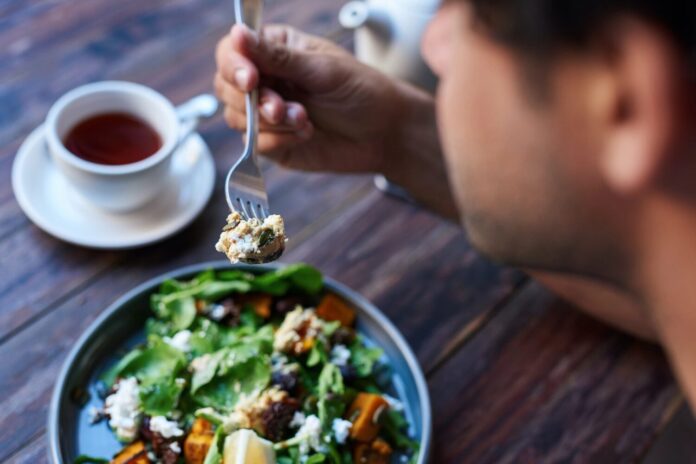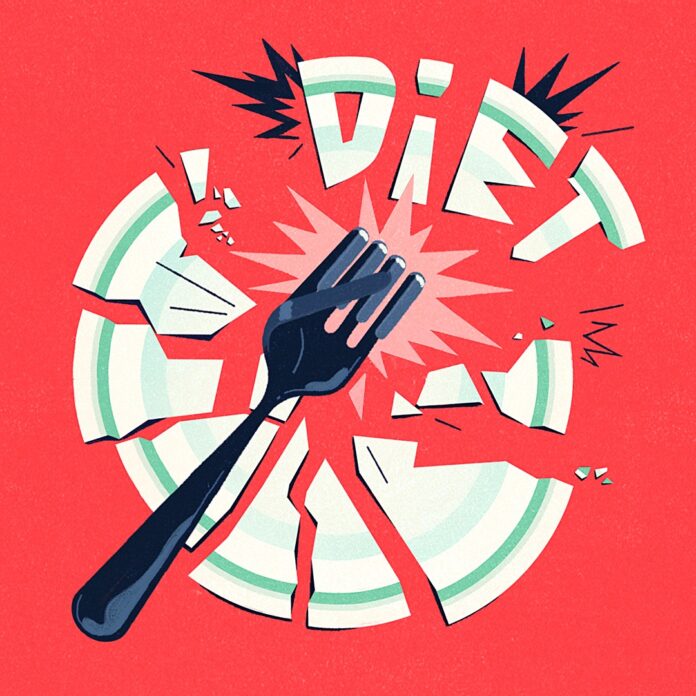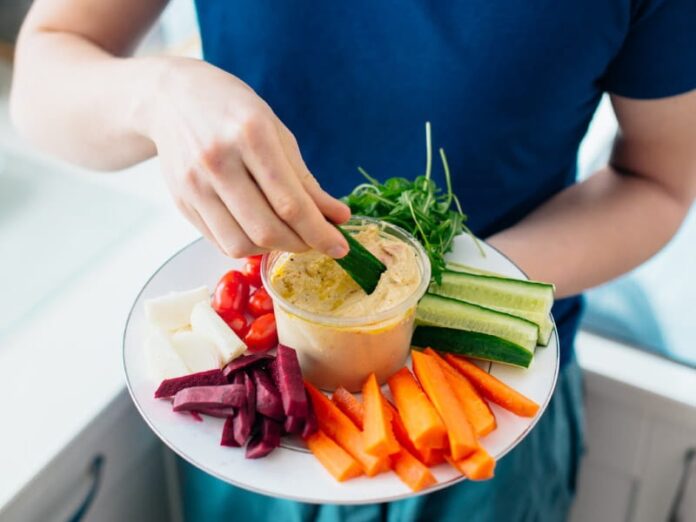Tired of diets that leave you lightheaded and cranky? You’re not alone. Most weight loss plans fail because they focus too much on restriction and not enough on real, satisfying food strategies.
You don’t need to feel punished to lose fat. You need smarter fuel. This article gives you practical ways to eat better, feel full, and still lose weight—without starving yourself or counting every bite.
Key Highlights
- You can lose weight without feeling hungry all the time
- Protein-rich meals help control appetite naturally
- Fiber slows digestion and keeps you full for longer
- Certain habits like mindful eating make a big impact
- Hydration plays a bigger role than most people realize
- Medical options are available for those who want expert support
The Problem Isn’t You, It’s the Way You’ve Been Taught to Eat

Most people assume that eating less is the only path to losing weight. That leads to skipping meals, cutting too many calories, or avoiding all your favorite foods. But hunger fights back. The more you resist it, the louder it gets.
Your body needs consistent fuel to function. Without it, your metabolism slows down. Energy drops. Cravings explode. The result? You end up overeating later or quitting altogether. That’s not a willpower issue. It’s a biology issue.
You need a new approach. One that feeds your body, not fights it. Let’s start with the basics—how to feel full without going overboard.
Eat Smart, Not Less
The secret isn’t eating less food—it’s eating the right food. Certain nutrients trigger your body’s natural fullness signals. They slow digestion, stabilize blood sugar, and help your brain realize you’re satisfied.
Focus on Protein First
Protein is the most filling macronutrient. It helps control hunger hormones like ghrelin and supports muscle retention during fat loss. Include protein in every meal:
- Eggs or Greek yogurt at breakfast
- Chicken, tofu, or beans in your lunch and dinner
- Protein shakes or hard-boiled eggs as snacks
You’ll notice fewer cravings and better energy throughout the day.
Don’t Skip Fiber
Fiber swells in the stomach and takes longer to digest. That’s key for fullness. Aim for high-fiber foods like:
- Oats, lentils, and chickpeas
- Leafy greens, carrots, and broccoli
- Chia seeds, flaxseeds, and whole fruit
Processed carbs digest fast and leave you hungrier. Swap them for slower, fiber-rich alternatives.
Consider Expert Help for a Boost
If you’ve tried clean eating, calorie control, and exercise but still feel stuck, there are advanced solutions available. Facilities like Pure Sweat Spa in Gilbert, AZ offer medical weight loss services tailored to your individual health profile.
Their approach includes options like IV therapy, infrared sauna detox, and semaglutide weight control protocols—without pushing extreme restrictions. You don’t need to struggle alone. Guided care makes the process faster, safer, and more effective.
Timing and Habits Matter as Much as the Food Itself

Your body thrives on rhythm. Erratic meals confuse your hunger cues. Eating at consistent intervals improves digestion, regulates appetite, and reduces binge urges.
Don’t Skip Breakfast
A solid breakfast sets your hunger pattern for the day. Skipping it leads to intense hunger later. Include protein, fiber, and healthy fats. Try a veggie omelet with avocado or oatmeal with chia seeds.
Space Out Your Meals
Let your body process food. Eat every 4–5 hours instead of grazing all day. Each meal should be filling enough to carry you to the next.
Avoid Liquid Calories
Juices, sodas, and sugary coffees don’t fill you up. They add calories without satisfaction. Choose water, herbal teas, or black coffee instead.
Eat Slower, Feel Fuller
You eat less when you give your brain time to catch up with your stomach. It takes about 20 minutes to register fullness. Most people eat too fast to notice.
How to Slow Down:
- Put your fork down between bites
- Chew thoroughly and pay attention to flavor
- Avoid distractions like screens during meals
This alone can reduce how much you eat without feeling deprived. You’ll also enjoy food more.
Snack Smarter or Don’t Snack at All
Snacking can either help or hurt your goals. It depends on what, when, and why you’re snacking. Many people snack out of boredom, not hunger.
If you genuinely feel hungry between meals, choose snacks that satisfy:
- A small handful of almonds
- A boiled egg with cucumber slices
- A protein bar (low sugar, high fiber)
Avoid high-sugar or ultra-processed options. They spike blood sugar and make you hungrier later.
Hydration Is Hunger Control
People often confuse thirst with hunger. Mild dehydration triggers cravings and slows metabolism. Drinking enough water reduces this confusion and helps control appetite.
How to Stay Hydrated:
- Start your day with a tall glass of water
- Drink before every meal
- Carry a refillable water bottle
Flavor it with lemon, cucumber, or mint if you need variety. Avoid sweetened or flavored waters that add sugar without real benefit.
Volume Eating: More Food, Fewer Calories
You can eat a large amount of food without blowing your calorie limit if you pick high-volume, low-calorie foods. This is a trick used by fitness models and nutritionists.
High-Volume Foods Include:
- Leafy greens
- Cauliflower rice
- Zucchini noodles
- Broth-based soups
- Berries and watermelon
Build meals around these foods and add protein to stay full longer. You’ll get satisfaction without overdoing it.
Don’t Trust Diet Culture

Weight loss isn’t about punishing yourself. It’s about setting up systems that support you long-term. Don’t chase shortcuts or quick fixes. Focus on sustainability.
Avoid:
- Juice cleanses
- 1,000-calorie crash diets
- Extreme workout programs without proper fuel
They all fail eventually. Your body deserves nourishment, not punishment.
Track, Reflect, Adjust
Tracking your intake, hunger patterns, and energy levels helps you notice what works and what doesn’t. You don’t need to obsess over calories. Instead, focus on:
- Which meals kept you full
- What triggered cravings
- How your energy felt after different foods
This gives you real data to adjust your approach over time.
Final Thoughts
You can lose fat without starving. You can feel strong, satisfied, and in control again. But it takes strategy—not restriction. Real food. Smarter habits. And in some cases, professional support like medical weight loss options.
Forget crash diets. Choose methods that make you feel better—not worse. The more nourished you feel, the more consistent you’ll be. And that’s where long-term weight loss wins.
Ready to take the next step? Start with one change today. Add more protein to your next meal. Drink more water. Slow down. Then build momentum. You’ve got this.
Let your weight loss journey be one of strength, not sacrifice.










